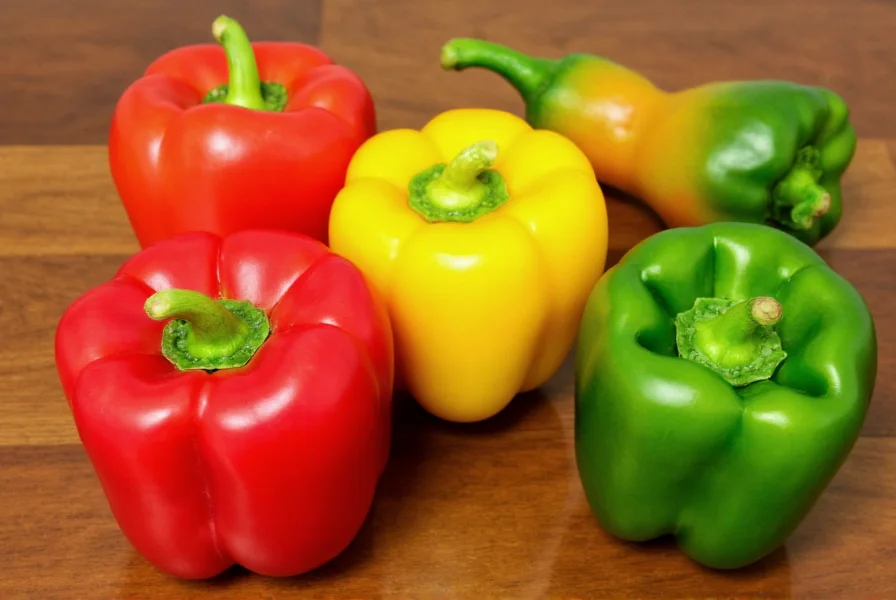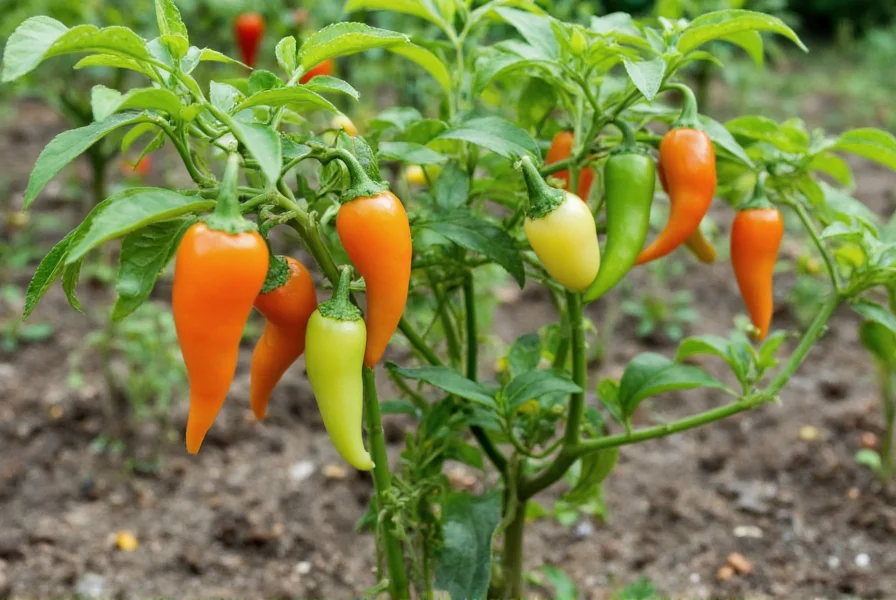Understanding pepper vegetables begins with recognizing their dual identity in food classification. Though technically fruits, peppers function as vegetables in meal preparation across global cuisines. This distinction matters for gardeners, chefs, and nutrition enthusiasts seeking accurate information about these popular plants.
Botanical Classification vs. Culinary Tradition
The scientific community classifies peppers as fruits because they develop from the ovary of a flowering plant and contain seeds. Specifically, they're categorized as berries—a classification that surprises many given the common understanding of berries. However, culinary tradition treats them as vegetables due to their savory flavor profile, low sugar content, and typical use in main dishes rather than desserts.
This botanical-culinary disconnect applies to several other foods including tomatoes, cucumbers, and eggplants. The 1893 U.S. Supreme Court case Nix v. Hedden famously ruled that tomatoes should be classified as vegetables for tariff purposes, establishing that culinary usage often overrides botanical accuracy in everyday contexts.

Major Types of Pepper Vegetables
Pepper vegetables span an extraordinary range of varieties, generally falling into two main categories:
| Type | Common Varieties | Scoville Heat Units | Primary Uses |
|---|---|---|---|
| Sweet Peppers | Bell, Cubanelle, Pimento | 0 SHU | Salads, stir-fries, stuffed dishes |
| Mild Heat Peppers | Jalapeño, Serrano, Anaheim | 1,000-50,000 SHU | Salsas, pickling, grilled dishes |
| Hot Peppers | Habanero, Cayenne, Thai chili | 50,000-350,000 SHU | Hot sauces, spice blends, ethnic cuisines |
| Extreme Heat Peppers | Ghost pepper, Carolina Reaper | 800,000-2,200,000+ SHU | Specialty sauces, competitive eating |
Nutritional Profile and Health Benefits
Pepper vegetables deliver impressive nutritional benefits regardless of their heat level. Bell peppers, particularly the red variety, contain three times more vitamin C than oranges by weight. All pepper types provide significant amounts of:
- Vitamin A (as beta-carotene)
- Vitamin B6
- Vitamin E
- Potassium
- Dietary fiber
The compound capsaicin, responsible for heat in chili peppers, offers several health advantages including pain relief, metabolism boosting, and potential anti-cancer properties. Research shows regular consumption of pepper vegetables correlates with reduced inflammation and improved cardiovascular health.
Culinary Applications Across Varieties
Understanding different pepper vegetable types unlocks diverse culinary possibilities. Sweet bell peppers work well raw in salads or roasted to bring out natural sugars. Mild heat varieties like jalapeños add subtle warmth to salsas and nachos. Hot peppers such as habaneros provide intense heat best used sparingly in Caribbean and Mexican dishes.
When working with hot pepper vegetables, remember that the seeds and white membranes contain the highest concentration of capsaicin. Removing these reduces heat significantly while preserving flavor. For gardeners interested in growing pepper vegetables at home, most varieties require warm temperatures and well-draining soil with consistent moisture.

Common Misconceptions About Pepper Vegetables
Several myths persist about pepper vegetables that deserve clarification. Many believe that smaller peppers are always hotter, but heat depends more on variety than size. The color of pepper vegetables indicates ripeness rather than heat level—green bell peppers are simply unripe versions of the same plant that will turn yellow, orange, or red when mature.
Another frequent question concerns the difference between sweet and hot peppers at the genetic level. All pepper vegetables share the same basic structure, but hot varieties produce capsaicin while sweet varieties have a recessive gene that prevents its production. This explains why occasionally a sweet pepper plant might produce a single hot fruit through genetic reversion.
Storage and Preparation Tips
Proper storage extends the shelf life of pepper vegetables significantly. Whole peppers keep best in the crisper drawer of your refrigerator for 1-2 weeks. For longer storage, roasting and freezing preserves both flavor and nutritional value. When cutting hot pepper vegetables, wear gloves to prevent capsaicin transfer to sensitive areas, and always wash cutting boards thoroughly afterward.
For those exploring the culinary uses for different pepper varieties, consider these pairing suggestions: red bell peppers complement chocolate in mole sauces, yellow peppers enhance lemon-based dressings, and poblano peppers pair beautifully with corn and cheese in traditional chiles rellenos.
Are peppers technically fruits or vegetables?
Peppers are botanically classified as fruits (specifically berries) because they develop from the flower and contain seeds. However, they're treated as vegetables in culinary contexts due to their savory flavor profile and common usage in main dishes rather than desserts. This classification difference explains why peppers appear in both fruit and vegetable sections depending on context.
What makes some peppers hot while others are sweet?
The heat in pepper vegetables comes from capsaicin, a chemical compound produced in the placenta (white membranes) and seeds. Sweet pepper varieties contain a recessive gene that prevents capsaicin production. All pepper plants share the same basic genetics, but hot varieties express the capsaicin-producing genes while sweet varieties do not. Occasionally, a sweet pepper plant may produce a single hot fruit through genetic reversion.
Which pepper vegetable has the highest nutritional value?
Red bell peppers generally offer the highest nutritional value among common pepper vegetables. As peppers ripen from green to red, their vitamin C content increases by nearly 50%, and they develop significantly higher levels of beta-carotene (vitamin A) and lycopene. Fully ripe red peppers contain up to 11 times more beta-carotene and 1.5 times more vitamin C than their green counterparts.
How can I reduce the heat of a pepper vegetable in cooking?
To reduce heat in pepper vegetables, remove the seeds and white membranes (placenta) where most capsaicin concentrates. Soaking chopped hot peppers in vinegar or salt water for 10-15 minutes can further reduce heat. Cooking peppers also diminishes capsaicin intensity, with longer cooking times resulting in milder flavor. For immediate heat relief while handling hot peppers, wear gloves and avoid touching your face.
Can I grow different types of pepper vegetables together?
Yes, you can grow different pepper vegetable varieties together, but they may cross-pollinate if flowering simultaneously. This won't affect the current season's fruit but could alter seeds saved for next year. Most gardeners grow multiple pepper types without issues since cross-pollination only affects future generations. Provide adequate spacing (18-24 inches between plants), consistent watering, and full sun for optimal growth of all pepper vegetable types.











 浙公网安备
33010002000092号
浙公网安备
33010002000092号 浙B2-20120091-4
浙B2-20120091-4